-
 Bitcoin
Bitcoin $105,278.9859
4.61% -
 Ethereum
Ethereum $2,414.7741
8.20% -
 Tether USDt
Tether USDt $1.0007
0.05% -
 XRP
XRP $2.1600
7.53% -
 BNB
BNB $639.5433
3.75% -
 Solana
Solana $144.3830
9.37% -
 USDC
USDC $1.0001
0.02% -
 TRON
TRON $0.2742
3.84% -
 Dogecoin
Dogecoin $0.1640
8.57% -
 Cardano
Cardano $0.5811
7.49% -
 Hyperliquid
Hyperliquid $37.2466
5.28% -
 Sui
Sui $2.8243
14.84% -
 Bitcoin Cash
Bitcoin Cash $460.8816
2.22% -
 Chainlink
Chainlink $12.9580
11.75% -
 UNUS SED LEO
UNUS SED LEO $9.1359
1.23% -
 Avalanche
Avalanche $18.2302
10.30% -
 Stellar
Stellar $0.2463
7.80% -
 Toncoin
Toncoin $2.9151
7.18% -
 Shiba Inu
Shiba Inu $0.0...01163
9.79% -
 Hedera
Hedera $0.1532
14.01% -
 Litecoin
Litecoin $85.3310
6.29% -
 Monero
Monero $308.8215
2.90% -
 Ethena USDe
Ethena USDe $1.0007
0.03% -
 Polkadot
Polkadot $3.4259
9.42% -
 Dai
Dai $1.0002
0.01% -
 Bitget Token
Bitget Token $4.1742
3.19% -
 Uniswap
Uniswap $6.8272
8.53% -
 Pepe
Pepe $0.0...09939
12.29% -
 Pi
Pi $0.5358
6.03% -
 Aave
Aave $257.3092
12.83%
Is the KD indicator effective for the second golden cross in the overbought area?
The second golden cross in the overbought zone can signal a potential bullish continuation in crypto trading but requires volume and confirmation for reliability.
Jun 23, 2025 at 10:49 pm
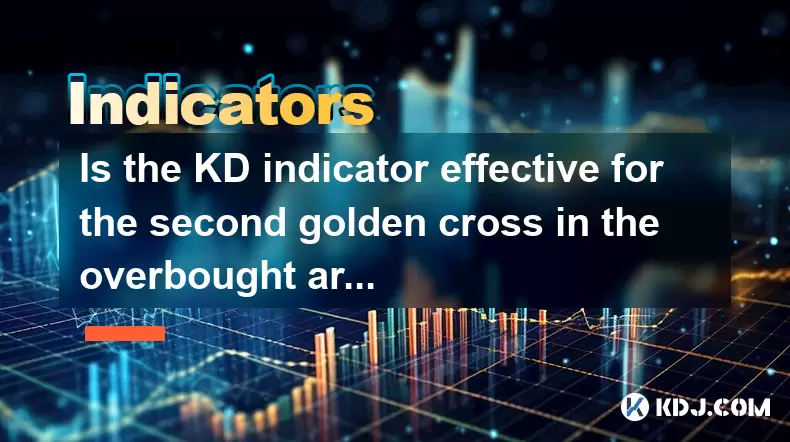
Understanding the KD Indicator and Its Relevance in Cryptocurrency Trading
The KD indicator, also known as the Stochastic Oscillator, is a momentum-based technical analysis tool widely used by cryptocurrency traders. It helps identify overbought or oversold conditions in an asset's price movement. The indicator consists of two lines: %K and %D. When these lines cross, they can signal potential buy or sell opportunities. In the context of crypto trading, where volatility is high and trends change rapidly, understanding how to interpret the second golden cross within the overbought zone becomes crucial.
The Stochastic Oscillator ranges from 0 to 100, with levels above 80 typically considered overbought and below 20 considered oversold.
What Is a Golden Cross in the Context of the KD Indicator?
A golden cross occurs when the %K line crosses above the %D line, signaling a potential bullish reversal. This pattern is especially watched in downtrend scenarios. However, when this happens in the overbought area (above 80), it raises questions about its reliability.
- First golden cross: Often seen as a strong signal for entering long positions.
- Second golden cross: Appears after the initial cross and may indicate a continuation or false signal depending on market conditions.
In cryptocurrencies like Bitcoin or Ethereum, where sudden pump-and-dump cycles are common, interpreting the second golden cross requires careful observation of volume and broader market sentiment.
Why the Overbought Zone Matters in Crypto Markets
Cryptocurrencies often defy traditional technical signals due to their speculative nature. An asset can remain in the overbought zone for extended periods during strong uptrends.
- Overbought doesn’t mean overvalued in crypto; it could signal continued buying pressure.
- False signals increase in overbought regions, especially if volume declines or whale movements distort prices.
When a second golden cross forms in such zones, it might reflect short-term retracements rather than trend reversals. Traders must analyze candlestick patterns and support/resistance levels alongside the KD indicator.
How to Spot and Confirm a Second Golden Cross in Overbought Territory
To effectively assess whether the second golden cross is valid in the overbought area, follow these steps:
- Step 1: Set up the KD indicator on your chart with standard settings (usually 14-period).
- Step 2: Identify the first golden cross occurring just before or during entry into the overbought region.
- Step 3: Wait for the %K line to fall below %D briefly and then rise again to form the second golden cross.
- Step 4: Check if volume supports the move; increasing volume suggests strength.
- Step 5: Look at adjacent indicators like RSI or MACD for confirmation.
If the second golden cross coincides with a bullish candlestick pattern (like hammer or engulfing), it increases the likelihood of a sustained rally.
Common Misinterpretations of the Second Golden Cross in Overbought Zones
Many novice traders treat all golden crosses equally, which can lead to losses in volatile crypto markets.
- Mistake 1: Entering long positions without confirming the trend strength.
- Mistake 2: Ignoring divergences between price action and the KD indicator.
- Mistake 3: Failing to adjust timeframes; a golden cross on a 1-hour chart may not be relevant on a daily chart.
For example, during a parabolic rise in altcoins, multiple golden crosses may appear in overbought areas but end up being followed by sharp corrections.
Backtesting the Effectiveness of the Second Golden Cross in Overbought Conditions
Before applying this strategy live, backtesting is essential.
- Use historical data from platforms like Binance or TradingView.
- Test across different assets such as BTC, ETH, and major altcoins.
- Apply filters like volume spikes, moving averages, or Fibonacci levels to improve accuracy.
You can use tools like Python libraries (e.g., pandas, backtrader) or TradingView’s Pine Script to automate tests. Results will vary based on market cycles and exchange-specific behaviors.
Frequently Asked Questions
Q1: Can the second golden cross still be reliable in overbought territory during a strong uptrend?
Yes, during strong uptrends, especially in bull market phases, the second golden cross can act as a re-entry point. However, it should be supported by rising volume and positive market sentiment.
Q2: Should I avoid using the KD indicator altogether in overbought zones?
No, you shouldn't avoid it. Instead, combine it with other tools like RSI divergence, candlestick patterns, or volume analysis to filter out false signals.
Q3: How do I differentiate between a genuine and false second golden cross?
Look for confluence: check if other indicators align, observe candlestick formations, and ensure that volume is increasing. Also, consider the broader trend on higher timeframes.
Q4: Does the effectiveness of the second golden cross vary between different cryptocurrencies?
Yes, it does. Large-cap coins like Bitcoin tend to have more reliable signals due to higher liquidity and less manipulation compared to small-cap altcoins.
Disclaimer:info@kdj.com
The information provided is not trading advice. kdj.com does not assume any responsibility for any investments made based on the information provided in this article. Cryptocurrencies are highly volatile and it is highly recommended that you invest with caution after thorough research!
If you believe that the content used on this website infringes your copyright, please contact us immediately (info@kdj.com) and we will delete it promptly.
- XLM Price, Bitcoin Solaris, and Returns Prediction: Navigating the Crypto Landscape
- 2025-06-24 16:25:13
- Adam Schiff's COIN Act: Curbing Crypto Endorsements and Conflicts of Interest
- 2025-06-24 16:25:13
- Coinbase Stock Price and Benchmark Issues: A NYC Perspective
- 2025-06-24 16:35:12
- Shiba Inu, Pepe Coin, and the Meme Coin Mania: What's the Deal?
- 2025-06-24 16:35:12
- Rupee Coin Riches: How to Sell Your Way to Financial Freedom
- 2025-06-24 14:25:12
- XRP Ledger, Validators, and Holders: Navigating the Future of Digital Finance
- 2025-06-24 14:25:12
Related knowledge
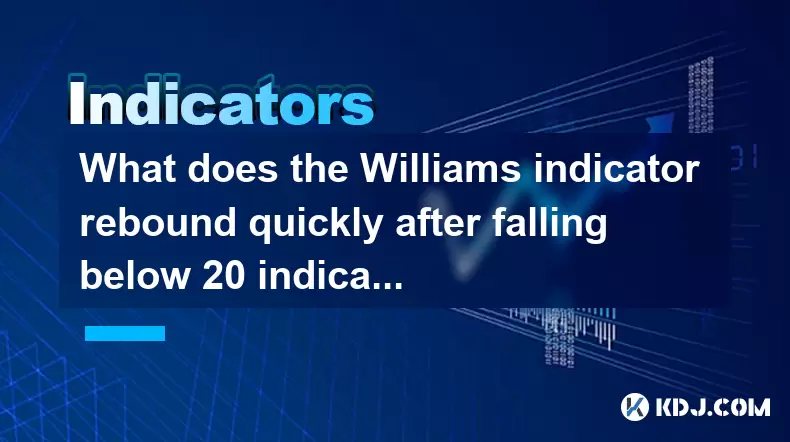
What does the Williams indicator rebound quickly after falling below 20 indicate?
Jun 24,2025 at 04:49pm
Understanding the Williams %R IndicatorThe Williams %R indicator, also known as Williams Percent Range, is a momentum oscillator used in technical analysis to identify overbought and oversold conditions in financial markets, including cryptocurrencies. It was developed by Larry Williams and typically operates on a scale from 0 to -100. In the context of...
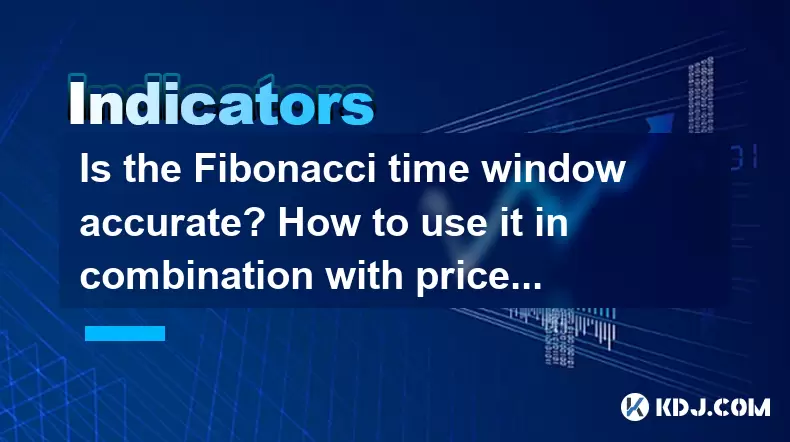
Is the Fibonacci time window accurate? How to use it in combination with price patterns?
Jun 24,2025 at 03:49pm
Understanding the Fibonacci Time Window ConceptThe Fibonacci time window is a technical analysis tool derived from the Fibonacci sequence, commonly used in financial markets, including cryptocurrency trading, to predict potential reversal or continuation points based on time rather than price. Unlike traditional Fibonacci retracement levels that focus o...
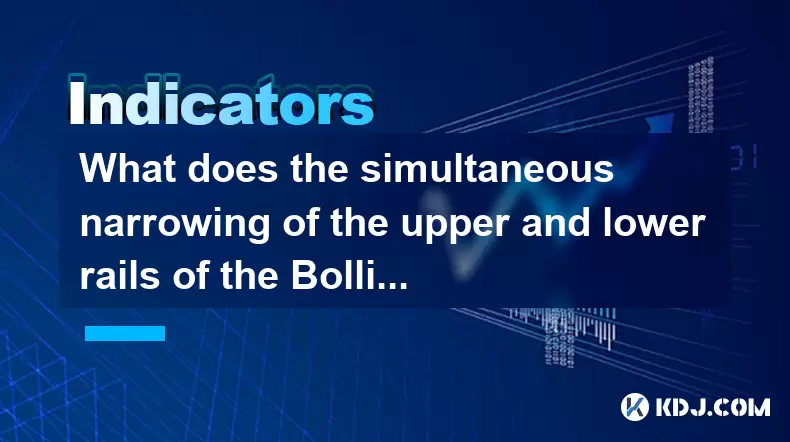
What does the simultaneous narrowing of the upper and lower rails of the Bollinger Bands indicate? How to predict the direction of the breakthrough?
Jun 24,2025 at 04:43pm
Understanding the Bollinger Bands MechanismBollinger Bands are a popular technical analysis tool used in cryptocurrency trading to assess price volatility and potential reversal points. The indicator consists of three lines: a simple moving average (SMA) in the center, typically set at 20 periods, with two outer bands that represent standard deviations ...

Is the large volume limit drop at the bottom a fund accumulation? How to confirm the reversal later?
Jun 24,2025 at 01:42pm
Understanding Large Volume Limit Drops at the BottomA large volume limit drop refers to a situation where the price of a cryptocurrency falls sharply, hitting its lower circuit breaker or minimum daily trading threshold, and is accompanied by unusually high trading volume. When this occurs at what appears to be the bottom of a downtrend, it raises quest...

Will the low cross star reverse? What additional conditions need to be met?
Jun 24,2025 at 02:50pm
Understanding the Low Cross Star PatternThe low cross star is a candlestick pattern often observed in cryptocurrency trading charts. It typically appears during a downtrend and consists of a small-bodied candle with long upper and lower shadows, resembling a cross or a doji. Traders look for this pattern as a potential signal of reversal from a bearish ...
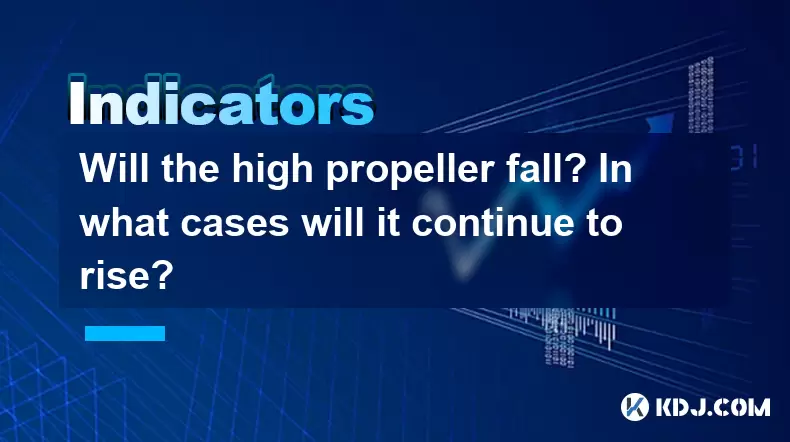
Will the high propeller fall? In what cases will it continue to rise?
Jun 24,2025 at 04:29pm
What Does 'High Propeller' Mean in the Cryptocurrency Context?In the cryptocurrency community, the term 'high propeller' is often used colloquially to refer to a digital asset or token that has experienced a rapid and significant price surge. This expression typically describes coins or tokens that have seen their value rise sharply over a short period,...

What does the Williams indicator rebound quickly after falling below 20 indicate?
Jun 24,2025 at 04:49pm
Understanding the Williams %R IndicatorThe Williams %R indicator, also known as Williams Percent Range, is a momentum oscillator used in technical analysis to identify overbought and oversold conditions in financial markets, including cryptocurrencies. It was developed by Larry Williams and typically operates on a scale from 0 to -100. In the context of...

Is the Fibonacci time window accurate? How to use it in combination with price patterns?
Jun 24,2025 at 03:49pm
Understanding the Fibonacci Time Window ConceptThe Fibonacci time window is a technical analysis tool derived from the Fibonacci sequence, commonly used in financial markets, including cryptocurrency trading, to predict potential reversal or continuation points based on time rather than price. Unlike traditional Fibonacci retracement levels that focus o...

What does the simultaneous narrowing of the upper and lower rails of the Bollinger Bands indicate? How to predict the direction of the breakthrough?
Jun 24,2025 at 04:43pm
Understanding the Bollinger Bands MechanismBollinger Bands are a popular technical analysis tool used in cryptocurrency trading to assess price volatility and potential reversal points. The indicator consists of three lines: a simple moving average (SMA) in the center, typically set at 20 periods, with two outer bands that represent standard deviations ...

Is the large volume limit drop at the bottom a fund accumulation? How to confirm the reversal later?
Jun 24,2025 at 01:42pm
Understanding Large Volume Limit Drops at the BottomA large volume limit drop refers to a situation where the price of a cryptocurrency falls sharply, hitting its lower circuit breaker or minimum daily trading threshold, and is accompanied by unusually high trading volume. When this occurs at what appears to be the bottom of a downtrend, it raises quest...

Will the low cross star reverse? What additional conditions need to be met?
Jun 24,2025 at 02:50pm
Understanding the Low Cross Star PatternThe low cross star is a candlestick pattern often observed in cryptocurrency trading charts. It typically appears during a downtrend and consists of a small-bodied candle with long upper and lower shadows, resembling a cross or a doji. Traders look for this pattern as a potential signal of reversal from a bearish ...

Will the high propeller fall? In what cases will it continue to rise?
Jun 24,2025 at 04:29pm
What Does 'High Propeller' Mean in the Cryptocurrency Context?In the cryptocurrency community, the term 'high propeller' is often used colloquially to refer to a digital asset or token that has experienced a rapid and significant price surge. This expression typically describes coins or tokens that have seen their value rise sharply over a short period,...
See all articles
























































































